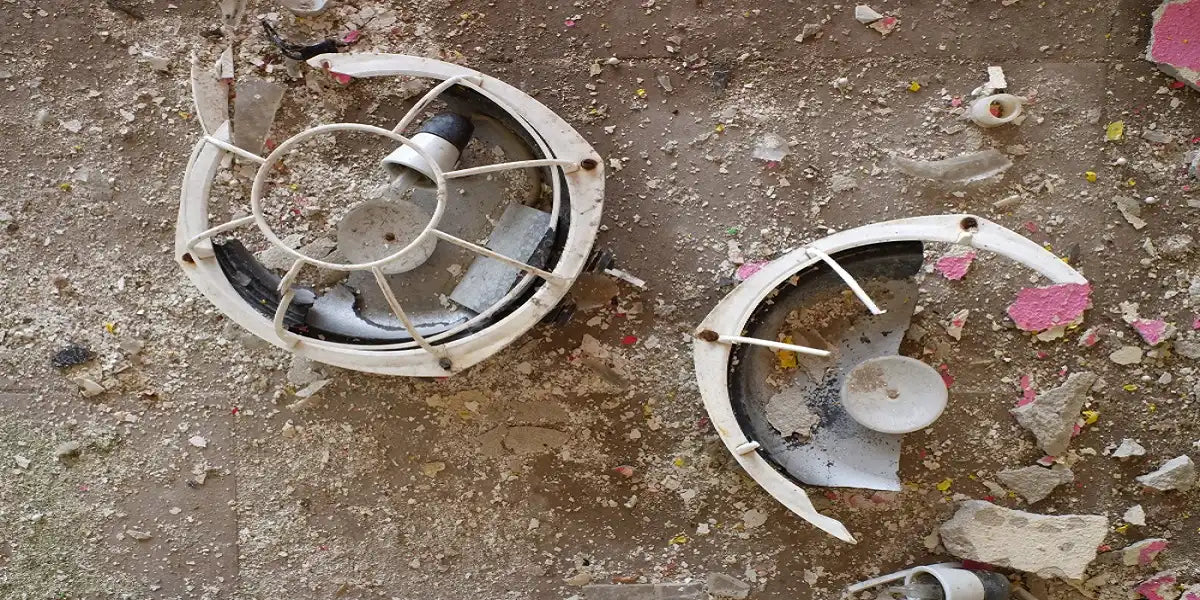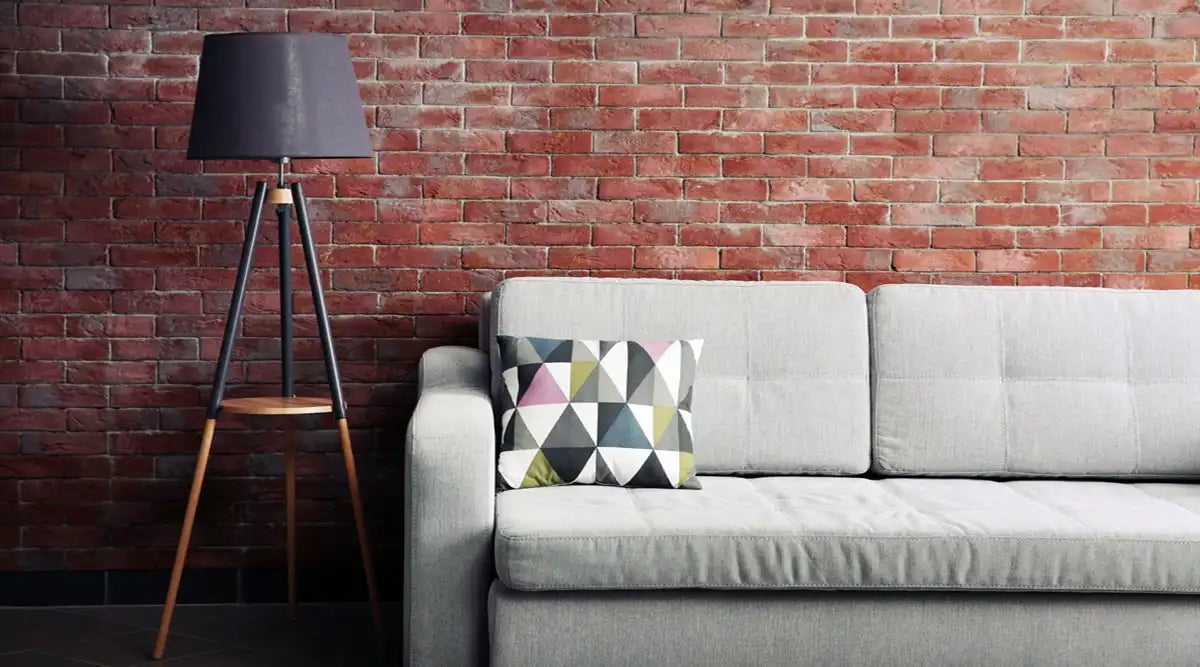Encounter a shaky or broken floor lamp pole? Discover the common pitfalls and the vital importance of safety and preparation before embarking on repairs.
This guide helps you address issues with your floor lamp, making sure it stands securely and works well.
Dive into our expert advice to confidently tackle floor lamp pole fixes, safeguarding both your lamp's longevity and your safety.
Ready to restore your lamp's glory?
Read on for essential repair insights.
Understanding Floor Lamp Pole Problems
When I inspect a floor lamp, I look for indications that it is more than just an object in a corner. It is a significant piece that creates the atmosphere of the room. A loose or wobbly floor lamp pole often hints at instability, and it's a problem I've dealt with more than once.
Identifying the Issue:
- Loose Connections: If I find the floor lamp leaning or feeling unstable, I check where the pole connects to the base and where segments of the pole screw together.
- Wobbly Structure: A floor lamp should stand firm. I determine if the wobble comes from where the pole meets the base or perhaps from a section higher up.
- Unstable Foundation: Sometimes the issue isn't with the pole itself but with how it's seated in the base. I ensure it's properly secured, as an unstable base can cause the whole lamp to tilt.
Common Culprits:
- Worn threads where pole segments connect
- Loose hardware securing the pole to the base
- Damaged or bent pole unable to support the lamp's weight
- Faulty design leading to uneven weight distribution
After pinpointing the problem, I gather the appropriate tools for stability restoration. Adjustable pliers, screwdrivers, and sometimes replacement parts become necessary to make the fixture stand tall and steady again. The goal is to ensure the lamp's safety and functionality. This can be achieved by either tightening a loose screw or replacing a damaged part.
Regularly check your floor lamp to prevent problems. It not only provides light but also keeps your space balanced and well-designed.
Safety Precautions
When tackling any repair, safety comes first, especially with electrical fixtures. I'll guide you through some critical safety steps to prevent injury or further damage to your floor lamp pole.
Unplug the Lamp
Before anything else, unplug your lamp. This step cuts off electricity and minimizes the risk of electric shock. It's a simple move, but it's the cornerstone of safe lamp repair.
Handle with Care
Inspect the cord for frayed wires or damage. A damaged cord isn’t just dangerous—it's a fire hazard. If you find any wear and tear, it's better to replace the cord before proceeding.
Workspace Preparation
Clear your workspace. Ensure it’s dry to eliminate any chance of electric shock. I prefer using a strong surface to work on, with tools nearby but not close to the edge to avoid accidents.
Dismantling the Lamp
Before addressing any internal issues with a floor lamp, I always ensure the lamp is safely prepared for disassembly. This involves removing delicate parts and separating the lamp piece by piece.
Remove the Lampshade and Bulb
First things first, I gently take off the lampshade, setting it aside so it won't get damaged. Next, I carefully unscrew the bulb by turning it counterclockwise, making sure it has cooled down if it was recently used. This prevents any accidental shattering and makes the interior of the lamp more accessible.
Separate the Pole from the Base
I then inspect the lamp to locate any screws that connect the pole to the base. I use the right screwdriver to take out each screw, keeping them organized so I can put them back easily later.
I carefully remove all the screws. Then, I detach the pole from its base. I make sure not to damage any wires that might be inside the lamp.
Repairing and Tightening
To fix a floor lamp pole, you typically tighten loose parts such as joints, screws, and bolts. These parts may have become loose over time. Let's dive into each process.
Secure Loose Joints
When I notice a lamp pole wobble, the first thing I do is check for loose joints. I start at the base and work my way up, gently wiggling each part to detect any movement. When a part is loose, I gently turn it to the right to make it tighter. I am careful not to use too much force that could harm it.
Notice: You can fix a broken lamp pole by using a strong and heat-resistant glue called JB Weld. JB Weld is made with metal.
This method, however, means the lamp will lose its ability to be disassembled in the future. This epoxy comes in silver-gray, but it may not match all finishes and could be seen on external threads. Most hardware stores and auto part stores carry it.
Tighten Screws and Bolts
Next, I locate any screws or bolts along the lamp pole. Using an appropriate screwdriver or an adjustable wrench, I turn each screw or bolt clockwise. It is crucial to ensure they're snug but not overtightened to avoid stripping them. Remember, a secure bolt will be firm but not forced.
Replacing Parts
When fixing a floor lamp pole, you usually need to reattach or replace parts to make it stable and work properly.
Reattach or Replace the Pole
Why Reattach?
Sometimes the problem with a lamp is a detached or loose pole. I carefully inspect to see if the pole can be reattached. It's crucial to ensure the connection points are clean and the fastening mechanisms like screws or bolts are in good condition.
Steps to Reattach:
- Align the Pole: I make sure the pole is perfectly aligned with the base.
- Secure the Joint: Using appropriate tools, I tighten any loose screws or bolts to reestablish a firm connection.
Why Replace?
If the pole is damaged beyond repair, replacement is the only option. A broken pole compromises the lamp's integrity and can be a safety hazard.
Steps to Replace:
- Measure and Purchase: I measure the old pole and purchase a new one that matches the dimensions and style.
- Assembly: Following the manufacturer’s instructions, I attach the new pole to the base and secure it properly.
Install a New Base if Needed
When to Replace the Base:
A faulty base can render the entire lamp unstable. If the base is cracked, warped, or broken, it’s time for a new one.
Steps to Install a New Base:
- Remove Old Base: I disconnect the pole from the old base, which might involve unscrewing or gently pulling it apart, depending on the model.
- Attach New Base: Placement of the new base is critical. I center the pole and use a screwdriver to fix it onto the new base, ensuring it's stable and level.
In both scenarios, replacing or reattaching, the goal is to maintain the lamp's stability and aesthetic. I always follow the manufacturer's guidelines and use the correct tools for a clean and safe repair.
Finishing Touches
I've learned that proper reassembly and testing of a fixed floor lamp are crucial to ensure it functions well. Here's how to manage it with care.
Reassemble the Lamp
Firstly, I make sure to reattach all the parts carefully. I align the pole with the base. Then, I insert any screws that were removed earlier.
Finally, I tighten them using a screwdriver. I pay close attention to the reattachment of the cord, ensuring it’s not pinched or twisted. It's vital to position the lampshade correctly, aligning it with the fixture to prevent it from being lopsided.
Test the Repaired Lamp
After reassembly, the moment of truth arrives with testing. I plug the cord back into the power outlet and gently turn on the lamp, watching for an immediate response. If the light flickers or doesn't turn on, I'll re-check the connections. Ideally, the lighting fixture illuminates consistently, indicating a job well done.
When to Call a Professional
In fixing floor lamp poles, I often emphasize that safety comes first. If I can't handle the repair because it's too complicated or involves structural problems, I should hire a professional. Electrical risks are a red flag. If the wiring looks compromised, or if I'm unsure about the connection when replacing a switch, a licensed electrician is the go-to person.
Signs of structural damage can be tricky. A lamp that won’t stand straight despite a tightened base may have an internal fracture. Also, any damage near the lamp's electrical cord entry should be inspected. It's better to be safe than sorry—an inspection from a professional can prevent potential hazards.
Legal stipulations are something I keep in mind. Some warranties or renters' agreements demand that only a certified professional perform electrical repairs. Disregarding this could lead to voided warranties or legal issues.
When selecting someone for the job, I make sure they have credible testimonials. A reliable professional should have a track record of safety and quality service. I confirm they have the right insurance and certifications, giving peace of mind that the repair follows regulations.
Maintenance Tips
Maintaining your floor lamp efficiently prevents potential problems and elongates its lifespan. With strong metal floor lamps, giving them some care will keep them working and looking good.
Regular Checks
I routinely examine my floor lamp to catch any issues early on. To maintain structural integrity, I check:
- Joints and connections: ensuring they're tight and well-aligned.
- Base stability: verifying that it's securely fastened and supportive.
I also look out for:
· Signs of wear: such as rust on metal parts, which might indicate the need for preventive care or touch-up paint.
Proper Cleaning
For cleaning, I follow a systematic approach:
- Unplugging the lamp: Safety first to prevent any electrical hazards.
- Dusting: Using a soft cloth, I gently remove dust from the lamp's surface.
- Wiping metal parts: A damp cloth with mild soap does the trick, followed by a dry cloth to prevent rust.
I make sure to:
- Avoid abrasive materials to prevent scratching the paint.
- Dry the lamp thoroughly to maintain its luster and prevent potential rusting.
By keeping up with these practices, I keep my floor lamp in top-notch condition.
Additional Considerations
In this section, I'll cover some vital points that you may not have considered when tackling a floor lamp pole repair. Choosing the right tools and inspecting electrical parts are important for a safe and effective repair.
Choosing the Right Tools
When setting out to tighten or fix a lamp pole, I make sure to have the right tools at hand. It’s not just about having a screwdriver; it’s about having the correct type of screwdriver for the screws present.
I often find that I need both flathead and Phillips head screwdrivers in varying sizes. Adjustable pliers also come in handy, especially if the pole has any grub screws. For assembly or disassembly, a wrench set may be necessary. Here’s a quick list of tools I gathered before starting:
- Screwdrivers: Flathead and Phillips head
- Adjustable Pliers
- Wrench Set
Make sure you're familiar with each tool's use, as the right tool used improperly can do more harm than good.
Assessing Electrical Components
Before I dive into the physical repair, I always assess the electrical components of the lamp. The power cord and wire must be intact and free of damage to prevent electrical hazards. If I spot any fraying or exposed wire, I know it's time for a replacement before proceeding.
When it comes to the lightbulb, I ensure it's the right fit and wattage for the lamp to avoid electrical issues. If the switch is the problem, I test it with a multimeter to confirm it before replacing it.
For a successful fix, I consider both the mechanical structure and the electrical integrity of the lamp. This holistic approach tends to lead to a longer-lasting solution.
Final thoughts
As you gear up to restore your floor lamp's stability and functionality, remember that not all issues may be worth your time or effort to fix. If your floor lamp is beyond repair or you're looking to update your home's lighting style, check out our current Floor Lamp Sale for the latest deals on quality lamps.
Now, we'd love to hear from you! Have you ever tackled a floor lamp repair? What challenges did you face, and what tips can you share with fellow readers?
Your experiences and insights could greatly benefit others embarking on their repair projects. Share your stories in the comments below and let's illuminate our community with shared knowledge and support.









2 comments
canadian pharmaceuticals usa
Hello to every single one, it’s in fact a fastidious for me to pay a quick visit this website, it contains helpful Information.
Diana
What if the metal on the pole breaks on the floor lamp? There’s no way to repair the metal, right?
Leave a comment
All comments are moderated before being published.
This site is protected by hCaptcha and the hCaptcha Privacy Policy and Terms of Service apply.